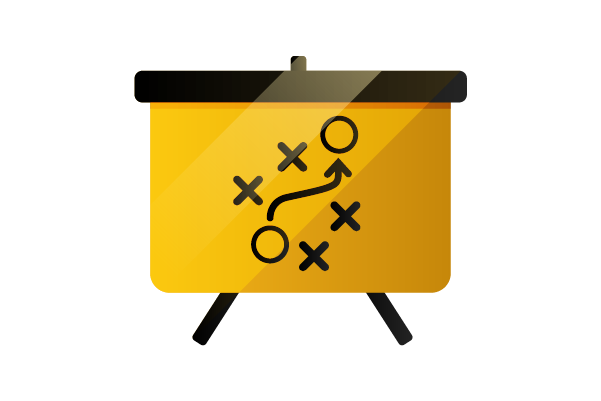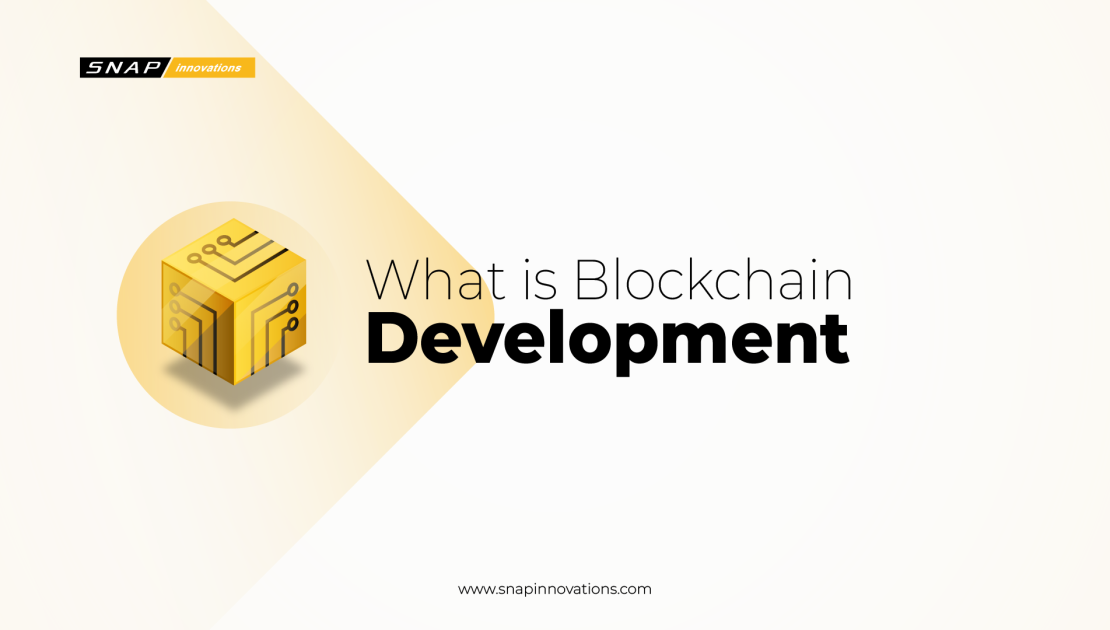A blockchain is a distributed database that is shared among a network of computers. It is a secure and transparent way to record information. Each block in the chain contains a number of transactions, and each transaction is linked to the previous transaction.
Blockchain technology has emerged as a disruptive force with the potential to transform various industries, including finance, supply chain management, and healthcare. Beyond its commercial applications, blockchain also holds significant promise for global development. This article explores the concept of “Blockchain Development” and presents a guiding framework to harness the technology’s potential for positive social and economic impact.
What is Blockchain Development?
Blockchain development refers to the process of creating and maintaining blockchain-based applications, networks, and smart contracts. It involves designing, coding, testing, and deploying blockchain solutions to address specific use cases and business requirements. Blockchain developers are responsible for building the infrastructure and applications that leverage blockchain technology’s decentralized and secure nature.
Blockchain is a distributed ledger technology that allows for secure, transparent, and tamper-proof transactions. It is based on a network of computers that share a single database of transactions. Blockchain development is a rapidly growing field, as the technology has the potential to revolutionize many industries. There is a high demand for blockchain developers, and the salaries for these positions are typically high.
Blockchain Development ‘s Potential
 Blockchain development is the process of creating and maintaining blockchain-based applications and systems. It involves a variety of skills, including software development, cryptography, and distributed systems.
Blockchain development is the process of creating and maintaining blockchain-based applications and systems. It involves a variety of skills, including software development, cryptography, and distributed systems.
Blockchain is a distributed ledger technology that allows for secure, transparent, and tamper-proof transactions. It is based on a network of computers that share a single database of transactions. Blockchain development is a rapidly growing field, as the technology has the potential to revolutionize many industries. There is a high demand for blockchain developers, and the salaries for these positions are typically high.
1. Financial Inclusion
Financial inclusion refers to the process of providing access to a wide range of financial services and products to individuals and businesses, especially those who are underserved or excluded from the traditional banking and financial systems. The goal of financial inclusion is to ensure that all people, regardless of their income level or location, have access to affordable and appropriate financial services that can help them manage their finances, save for the future, invest, and protect against financial shocks.
Cross-Border Payments: Blockchain can enable faster, cheaper, and more accessible cross-border remittances and payments, benefiting people in underserved regions who lack access to traditional banking services.
Microtransactions: Blockchain allows for microtransactions, making it feasible to provide financial services to individuals with limited resources. This can promote savings and financial stability.
2. Supply Chain Management
Supply Chain Management (SCM) is the strategic planning and coordination of the activities involved in sourcing, procurement, production, and logistics to ensure that goods and services are provided to customers in the most efficient and cost-effective manner. It encompasses a wide range of processes and activities that involve the flow of materials, information, and finances across the entire supply chain, from suppliers to manufacturers to distributors to customers.
Transparency and Traceability: Blockchain offers end-to-end transparency in supply chains, allowing consumers to verify the authenticity and origin of products. This can help combat counterfeiting, ensure product quality, and promote fair trade practices.
Reduced Fraud: Immutable records on the blockchain can reduce fraud in supply chains, ensuring that resources reach their intended destinations, especially in humanitarian efforts and aid distribution.
Read Next: 7 Best Layer 1 Crypto Projects Revolutionizing Blockchain in 2023
3. Healthcare
Healthcare is a broad and complex field that encompasses the provision of medical services, diagnosis, treatment, and prevention of illnesses or injuries to individuals and communities to maintain and improve their overall health and well-being. It involves a wide range of healthcare professionals, facilities, technologies, and systems working together to address the medical needs of individuals and populations
Medical Records: Blockchain can securely store and share medical records, improving the accuracy and accessibility of patient information. This can lead to better healthcare outcomes, especially in regions with fragmented health systems.
Drug Traceability: Ensuring the authenticity and safety of pharmaceuticals is crucial. Blockchain can track the production and distribution of medications, reducing the risk of counterfeit drugs entering the market.
4. Identity Management
Identity management (IDM), also known as identity and access management (IAM), is a set of processes, policies, and technologies used to manage and secure digital identities within an organization. The primary goal of identity management is to ensure that the right individuals have the appropriate access to various systems, applications, data, and resources while safeguarding against unauthorized access and protecting sensitive information
Digital Identity: Blockchain provides a secure and tamper-resistant way to manage digital identities. This can empower individuals who lack official identification documents, improving their access to essential services like healthcare, education, and finance.
Reduced Identity Theft: With blockchain-based identity management, individuals have more control over their personal data, reducing the risk of identity theft and data breaches.
5. Agriculture and Land Ownership
Agriculture and land ownership are closely intertwined aspects of the global economy and society. Land ownership plays a significant role in agriculture, as it determines who has the right to use and benefit from the land for farming and related activities
Land Title Registration: In regions with insecure land tenure systems, blockchain can establish immutable land registries, reducing land disputes, promoting land rights, and supporting economic development.
Supply Chain for Agriculture: Blockchain can enhance the transparency and traceability of agricultural products, ensuring fair compensation for farmers and improving food safety.
6. Voting Systems
Transparent Elections: Blockchain can provide tamper-proof records of votes, enhancing the integrity and transparency of voting systems. This can reduce election fraud and promote democracy.
7. Humanitarian Aid
Humanitarian aid refers to the provision of assistance, relief, and support to individuals and communities affected by disasters, conflicts, or other crises with the primary aim of alleviating suffering, preserving human dignity, and saving lives. Humanitarian aid is often delivered by governments, international organizations, non-governmental organizations (NGOs), and volunteers
Efficient Aid Distribution: Blockchain can streamline the distribution of humanitarian aid, reducing overhead costs and ensuring that resources reach those in need quickly and transparently.
Donor Accountability: Donors can use blockchain to track the impact of their contributions, promoting accountability and transparency in philanthropic efforts.
8. Education
Education is a fundamental and multifaceted process that involves the acquisition of knowledge, skills, values, and attitudes. It plays a central role in personal development, societal progress, and economic growth
Credential Verification: Blockchain can be used to securely store and verify educational credentials, reducing fraud in the education sector and increasing opportunities for remote or online learning.
Access to Educational Resources: Blockchain can enable the creation and sharing of educational content and resources, increasing access to quality education globally.
The potential of blockchain development extends beyond these examples and continues to evolve as new use cases are explored. Its impact on various sectors is driven by innovation, improved scalability, and the ability to address real-world challenges. As the technology matures and integrates with existing systems, blockchain development will likely play an increasingly significant role in reshaping industries and enhancing trust, security, and efficiency in a digitalized world.
A Guiding Framework for Blockchain Development
 Blockchain technology has been hailed as a potential catalyst for transformative change in the field of global development. Its ability to provide transparent, secure, and decentralized solutions has the potential to address long-standing challenges in areas such as financial inclusion, supply chain management, healthcare, and identity verification. However, to harness the full potential of blockchain in development, a guiding framework is essential. This framework should provide a structured approach to implementing blockchain-based solutions that truly benefit underserved communities and economies. Here’s a proposed guiding framework for blockchain in development:
Blockchain technology has been hailed as a potential catalyst for transformative change in the field of global development. Its ability to provide transparent, secure, and decentralized solutions has the potential to address long-standing challenges in areas such as financial inclusion, supply chain management, healthcare, and identity verification. However, to harness the full potential of blockchain in development, a guiding framework is essential. This framework should provide a structured approach to implementing blockchain-based solutions that truly benefit underserved communities and economies. Here’s a proposed guiding framework for blockchain in development:
- Needs Assessment and Problem Identification: Start by conducting a comprehensive needs assessment in the target community or sector. Identify the specific challenges, pain points, and inefficiencies that blockchain technology can address effectively. Engage with local stakeholders, including community leaders, NGOs, and government officials, to ensure a deep understanding of the context.
- Collaborative Partnerships: Develop collaborative partnerships with relevant organizations, including local governments, international development agencies, non-profits, academic institutions, and blockchain technology providers. Collaboration ensures a diversity of expertise, resources, and perspectives that can contribute to the success of the blockchain project.
- Regulatory Framework and Compliance: Before proceeding, navigate the regulatory landscape to ensure that blockchain-based initiatives comply with local laws and regulations. Engage with regulatory bodies and seek necessary approvals or licenses as required.
- Technology Selection and Design: Carefully select the appropriate blockchain platform or technology stack for the project. Consider factors such as scalability, consensus mechanism, data privacy, and smart contract capabilities. Design the solution with a focus on usability and accessibility for the target users, who may have varying levels of technical literacy.
- Community Engagement and Capacity Building: Involve the local community throughout the project’s lifecycle. Provide training and educational programs to empower community members to use and maintain the blockchain-based solution. Ensure that the technology aligns with the community’s culture and values.
- Pilot Projects and Proof of Concept: Begin with small-scale pilot projects to test the feasibility and effectiveness of the blockchain solution. These pilots serve as proof of concept and initiatives are crucial steps in exploring the potential of blockchain technology before committing to full-scale implementation. These initial phases allow organizations to test the feasibility, viability, and effectiveness of blockchain-based solutions in real-world scenarios
- User-Centric Design: Design the user interface and experience (UI/UX) with a strong focus on user-centric principles. Make the blockchain-based solution intuitive and user-friendly, especially for individuals who may have limited digital literacy.
- Data Privacy and Security: Implement robust data privacy measures and security protocols to protect sensitive information. Ensure that user data is stored securely and that privacy-enhancing technologies are employed where necessary.
- Monitoring and Evaluation: Continuously monitor the impact of the blockchain solution on the identified development goals. Use metrics and key performance indicators (KPIs) to assess its effectiveness. Adapt and refine the solution based on data-driven insights and user feedback.
Read Next: Market Connectivity on Trade and Investment
Conclusion
Blockchain development represents a transformative force in the world of technology and business. This innovative field harnesses the power of decentralized, transparent, and secure ledger systems to address a wide range of challenges and unlock new opportunities across various industries.
By embracing a well-defined guiding framework of blockchain development, stakeholders can harness the technology’s transformative potential to promote financial inclusion, improve supply chain traceability, enhance identity management, and advance many other critical development objectives. With careful planning, collaboration, and a commitment to user-centric design, blockchain can contribute significantly to global development efforts.


